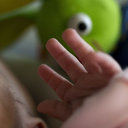Therapeutic hypothermia for asphyxiated newborns: experience of an Israeli tertiary center.
Anahtar kelimeler
Öz
BACKGROUND
Major advances in the treatment of perinatal asphyxial-hypoxic ischemic encephalopathy (PA-HIE) followed the translation of hypothermia animal studies into successful randomized controlled clinical trials that substantially influenced the current standard of care.
OBJECTIVE
To present our preliminary experience with the first cases of clinical application of therapeutic hypothermia for PA-HIE in what we believe is the first report on nonexperimental hypothermia for PA-HIE from Israel.
METHODS
We reviewed the medical records, imaging scans, electroencephalograms and outcome data of the six identified asphyxiated newborns who were managed with hypothermia in our services in 2008-2009.
RESULTS
All asphyxiated newborns required resuscitation and were encephalopathic. Systemic hypothermia (33.5 degrees C) was begun at a median age of 4.2 hours of life (range 2.5-6 hours) and continued for 3 days. All six infants showed a significantly depressed amplitude integrated electroencephalography background, and five had electrographic seizures. One infant died (16%) after 3.5 days. Major complications included fat necrosis and hypercalcemia (n=1), pneumothorax (n=1), and meconium aspiration syndrome (n=2). None of the infants developed major bleeding. Neurodevelopmental followup of the five surviving infants at median age 7.2 months (4.1-18.5 months) revealed developmental delays (Battelle screening), with their motor scores ranging from -1 to +1 standard deviation (Bayley scale). None developed feeding problems, oculomotor abnormalities, spasticity or seizures.
CONCLUSIONS
Our preliminary experience with this novel modality in a large Tel Aviv neonatal service is consistent with the clinical findings of published trials.


